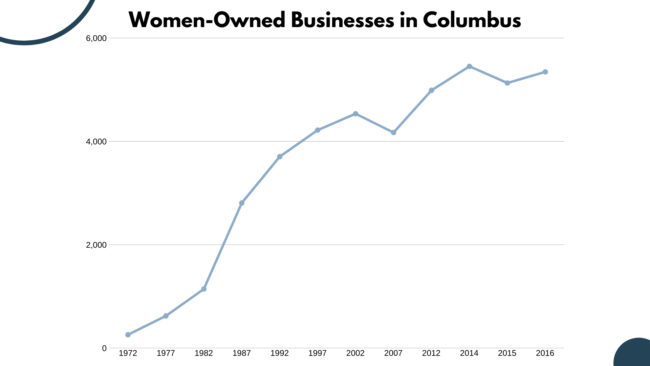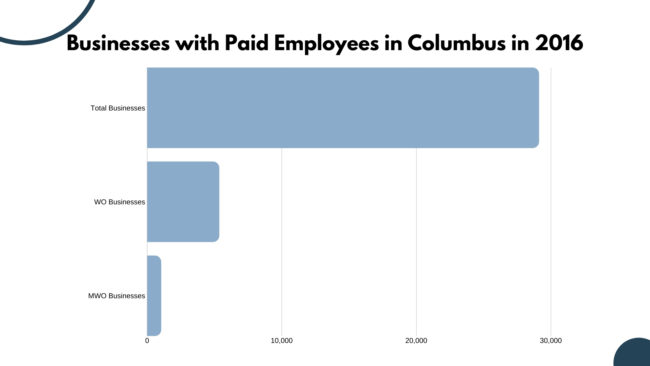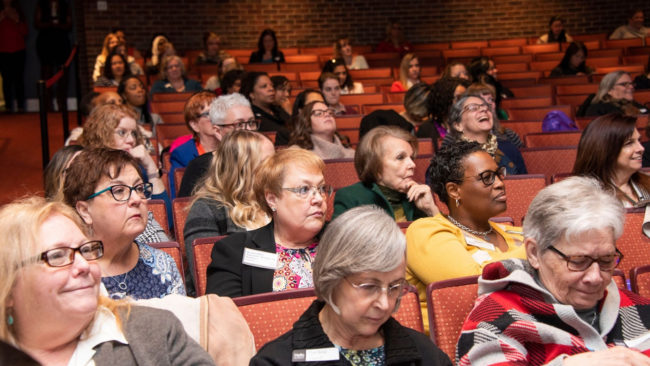Helen Yee holds a third-degree black belt and was inducted into the Association of Women Martial Arts Hall of Fame for her dedication to martial arts. In 1990, she won a silver medal competing on the USA Taekwondo team at the World Cup in Madrid.
What Yee didn’t always know, is that she would go on to start the American Institute of Alternative Medicine with her co-founder, Diane Sater-Wee, in the early years of the ’90s.
While training at the Olympic Training Center in Colorado Springs, Yee received sports massages which greatly helped her body’s aches and pains, which improved recovery time. So much so, that Yee felt pulled to bring this style of massage therapy back to Columbus and offer it to the public.
The American Institute of Alternative Medicine started as Massage Away, Inc. in 1990. Yee and her partner, Diane, enrolled in massage school and got licensed in massage therapy. Ultimately, they opened the doors of a massage clinic servicing Columbus, which at the time was a cottage industry.
By 1994, Massage Away, Inc. School of Therapy began enrolling students to match the customer demand for quality massage therapists. Evolving over 20 years, the American Institute of Alternative Medicine now has four programs and over 2,500 alumni.
“You don’t just say, “Oh, when I grow up, I want to start my own business,’ at least I don’t know that many people who do,” says Yee.
Yee is part of an increasing number of women entrepreneurs within the city of Columbus. An analysis of the US Census Survey of Business Owners (SBO) data shows that the number of Columbus women-owned businesses, like Yee’s, have grown 20 times between 1972 and 2016.

There were 257 women-owned businesses with paid employees in Columbus in 1972. In 2016, the most recent date of the survey, there were 5,345 women-owned businesses with paid employees in Columbus.

Despite the increase, women-owned businesses still only represent 18% of all businesses in the city with paid employees, according to the analysis.
Even more significant, women of color represent 1,030 out of the 29,101 total businesses with paid employees, being only 3.5%.
In a male-dominated entrepreneurship economy, women face additional challenges in both starting and maintaining a business. Sex and race-based stereotypes, financial capital education and access to informational resources are just a few of the several challenges women owners face in business growth.
Underrepresentation of minority owners in the leadership ecosystem creates even further developmental hurdles in understanding what success looks like and how it is achieved in the entrepreneurship path.
The transportation and public utility sector of Columbus businesses holds a strong lack of women ownership. In the most recent year of SBO data collection, there were zero women-owned transportation businesses with paid employees in the central Ohio area.
Hoa Pyles McManus, Chief of Culture and Co-founder of SHARE, a rideshare commute company that she began with her husband, Ryan McManus. SHARE is a scheduled in advance transportations solution for healthcare, senior, student and employee groups.
The pair started the company to improve commutes for individuals in a service offered by organizations. Unlike Uber or Lyft, SHARE relies on consistency with vehicles and drivers to enhance both security and reliability in transportation destination to destination.
“Right now, everything we know is on-demand like getting into your car, calling a Lyft or waiting for the bus. SHARE is about scheduling rides and life ahead of time,” says Pyles McManus.
Pyles McManus, her husband and children took a risk in 2016 when they decided to move to Portland, OR for six months and participate in an incubator program of the SHARE transportation solution. Pyles McManus left a nine-year longed-for position in her desired career path at The James Cancer Hospital and jumped into building her startup, SHARE.
Women are not as often introduced early to the entrepreneurial career path; this may be a cause of stereotypes around the career choices commonly selected for women.
“Women have been placed in specific boxes for so long — and when you don’t fit into someone’s idea of that box it tends to make them feel uncomfortable,” says Pyles McManus.
Stereotypes around a woman being a mother and owning a business consider it to be an impossible task. How can a woman have children and a career? Life as a mother while owning a business is often the result of a woman wanting more control of her individual income, job position and daily routine.
The National Association of Women Business Owners (NAWBO) was founded in 1975 as the first advocacy organization for women business owners. The Columbus chapter has made significant strides to provide an open and supportive environment for women-owned businesses while making legislative change.
The agenda of NAWBO is to understand and face the root cause of the 78 percent disparity in annual revenue generation between women-owned and male-owned businesses in Ohio.

A recent Women in Business analysis and article by Christy Farnbauch, Executive Director of NAWBO Columbus, found that businesses led by women are a significant contributor to both the local and state economy. Ohio is home to over 306,000 women-owned businesses annually generating more than $29 billion in revenue, creating 330,000 jobs and contributing $9.5 million in payroll. Of those businesses, Columbus represents nearly 50,000 women-owned businesses.
Despite women-owned businesses raising less money, women-led businesses outperform male counterparts in investment return. For every dollar of investment, female-run startups generate $0.78 in revenue, while male-run startups generate only $0.31.
Finding a way to be both respected and taken seriously as a woman CEO is a challenge in the current male-dominated industry.
In time, the hope is to see feminist values break stereotypes based on the roles of traditional women and minorities. Someone’s race, sexuality or gender have nothing to do with the ability to create, grow and maintain a business model. Female business owners are celebrated as the norm.
When Helen and Diane became serious about starting the massage clinic, it wasn’t very common for two women to apply and actually receive funding from a bank in the 1990s.
The necessary funding for the AIAM endeavor was received in an unexpected way to Yee and partner, Sater-Wee. Yee had been sticking to her fitness routine while facing limited access to business funding for AIAM. A colleague at the gym happened to be a vice president at a local bank, who ultimately agreed and approved a loan to fund the business.
“Sometimes it’s who you know that will get you to that next level of where you want to go,” says Yee.
Fast forward to 2019, McManus’s startup business, SHARE, has raised over $5 million in capital funds over three years. The company is preparing for its first series of A round of investment seed funding in 2020.
“It has been interesting learning how to talk to investors, what a relationship with an investor looks like and how to have a voice in the room, usually while being the only woman,” says Phyles McManus.
The venture capital industry has long been a male-dominated industry often providing funding at lower levels than requested to women and minority entrepreneurs. This makes it even more challenging for individuals to gain the courage to pitch to investors.
Columbus-based venture capital firm, Rev1 Ventures continues to expand its portfolio of startup businesses. The firm invested over $13 million in 36 different companies during 2018.
Over half of the investments made were allocated to businesses with women or minority founders. Of those investments, 38% was strictly capital funding.
“We look to build diverse teams with a supportive mentor network. This not only reduces the risk of failure but often times accelerates growth,” says Alicia Oddi, Director of Diversity and Inclusion at Rev1.
The company’s focus and research on diversity and inclusion efforts have found that through building teams made of diverse leaders and members, there are often better results. It is an important part of supporting the start-up ecosystem to bring diverse groups, ideas and people to the table.
“Oftentimes, women and people of color don’t have the opportunity to see success and how they can fit into leadership roles,” says Damita Brown, interim director of Columbus’s Office of Diversity and Inclusion.
To combat the unequal distribution of city dollars, Columbus is making efforts to remedy its contractual relationships. In July 2019, the city released the first disparity study after several delays in completion.
The goal of the disparity study is to document disparities among the percentage of Columbus city dollars received by minority and women-owned businesses on prime contracts and the percentage of dollars the businesses would have expected to receive if they were able to receive prime contracts and subcontracts with the city.
According to the 1989 U.S. Supreme Court, governments must prove discrimination exists before making efforts to solve the problem with an affirmative action program.
The 2019 Disparity Study was conducted in order to create race and gender-conscious programs, to support minorities while tailoring remedies to the disparities at hand.
The Disparity Study found a significant lack of diversity among the city’s prime contracts between 2012–2015. Disparities were found in African American businesses, Asian American businesses, Hispanic American businesses and Native American businesses within these contracts. Additionally, the study showed underutilization of women-owned businesses on contracts over $100,000.
Many groups are not being awarded city contracts, especially what we consider prime city contracts, in proportion with their availability on the bidding market. The worst disparities have been found in businesses owned by black men and women,” says Brown.
The disparity study recommended that the city utilize bid discounts and incentives when bidding on minority or women-owned businesses. The study was conducted by Mason Tillman Associates, based in Oakland, California, who declined to comment.
At the age of two, Mary B. Relotto came to Ohio from an orphanage in Italy. She grew up in the small town of Steubenville flourished with business in the coal and steel industries.
She attended Ohio University where she studied Journalism and Public Relations, although still carried a want to do and be more.
“Growing up I didn’t have access to mentors or role models in my career interest. I didn’t have an advocate or resources to help me thrive, which is why I started communities to do that,” says Relotto.
In 2007, Relotto officially founded Dames Bond, a combination of, “Dame: a woman who strives to help other women thrive,” and “Bond: to develop authentic relationships and make connections.”
The organization was created to connect women with entrepreneurship opportunities through leveraged resources and connections. This was one of the first all-women business communities solely focused on connecting women-owned businesses with consumers.
One of the most powerful elements of Dames Bond was the act of creating a space for women entrepreneurs to market themselves. By providing a casual setting for women to come together and talk about important topics, such as starting a business or how to begin investing, it opens up a new set of opportunities for women.
“Dames Bond was a way I could make it a little easier to bring women together to network themselves professionally. I wanted to create a non-intimidating meeting setting for those who are passionate to both learn and grow themselves around like-minded individuals,” says Relotto. “Having a strong diverse support network is absolutely essential to entrepreneurial success.”
Relotto also founded Thrive Columbus to create a resource directory and calendar of events on a mission to serve women. She wanted to make it easier for women to navigate the needed resources for running a business. The organization features over 30 organizations who range from advocacy, arts, business, leadership and politics to wellness.
“When women aren’t informed, they’re less engaged and contribute less and less. The community suffers when women don’t contribute. I developed Thrive to make it easier to identify resources that encourage women to connect, contribute and grow,” says Relotto.
In 2019, Thrive Columbus hosted the first full day summit showcasing specific organizations and speakers to address both the professional and personal needs of women in Columbus.
The debut brought 250 attendees and is to come back bigger and better in 2020, with Pulitzer Prize Winner, Connie Schultz, as the keynote speaker. Schultz will be presenting among seven panelists of leadership and diversity in both daily life and in owning a business.
Helen Yee of AIAM and Christy Farnbauch of NAWBO Columbus will be among 15 business experts at the Thrive Columbus 2020 summit on February 27, 2020.
Yee says it is such an honor to look back along her entrepreneurial journey and think about all the steps, bumps, people and challenges along the way.
As for progress on the disparity study conducted by the City of Columbus, the most recent update was provided at a community meeting on Aug 5, 2019.
Mayor Andrew J. Ginther stated that over the next six to nine months that the city will work with input from the community to determine what recommendations from the disparity study to implement.
The city plans to make revisions in municipal procurement code to make an impact in making “Columbus America’s Equal Opportunity City.”
“The completion of the disparity study provides a blueprint for examining the current status of our engagement with minority and women-owned companies,” says Brown. “This is the first step for us to create more advanced programs, policies and services to create a more even playing field for all contractors of the city.”
Over the course of five decades, we have seen the number of women and women of color owned businesses increase exponentially in Columbus. Yet, there is much progress to be made for an even playing field for all businesses, no matter the entrepreneur’s background.
This is a win for women of the city, yet it is increasingly important to understand the history that provides opportunities for the future women and minority leaders of tomorrow.
How the analysis was done:
For my capstone assignment as a journalism student at The Ohio State University, I was challenged to write a data-backed story on my desired topic.
My mother owned a consignment store in Grandview, OH for 28 years which allowed her the flexibility and freedom she needed as a single mother to my three older siblings and myself.
My father too made a living building and working on computers. I think watching my parents both live this entrepreneurial lifestyle inspired me as a child.
As a child, I turned a business out of everything, Koolaid stands, art sales and once created a spa in my bedroom for my family to visit. There were parts of my path I questioned and wondered where my career would take me.
In 2018, I started a web design and marketing business which has taken me on my own incredible entrepreneurial journey.
I was inspired to write this story, to get to know these women and go learn a lot about statistics to spread awareness and empowerment to other women starting or running a business — for whatever reasons that inspire them.
The Survey of Business Owners (SBO) data I analyzed was collected and analyzed via the US Census Bureau website for the years 2002 through 2016, the most recent year available of the study. This information was broken down to a state, county and city level. Data prior to 2002 was manually collected through print copies of the economic census data accessible at the State Library of Ohio.
Limitations occurred in the year by year total of women of color businesses due to different organization of data among measurements.
A special thank you to the women who welcomed my curiosity, devoted their time and shared their insight for this story.





